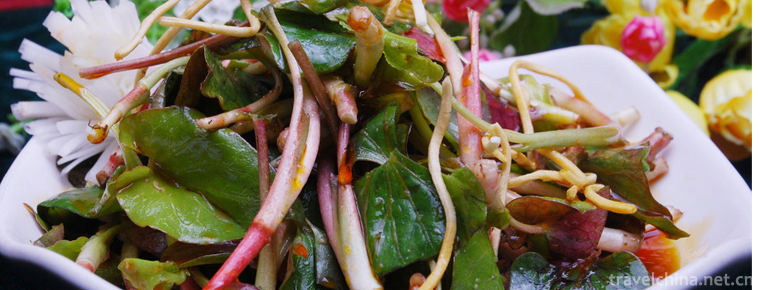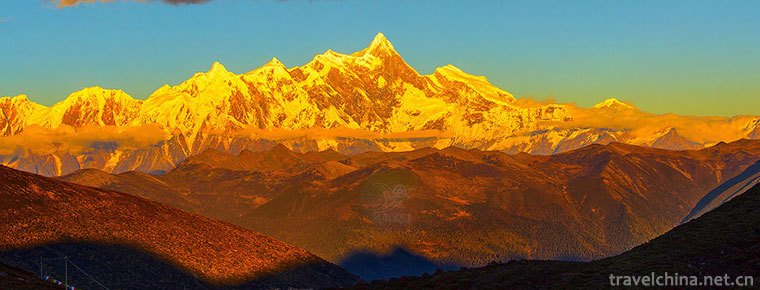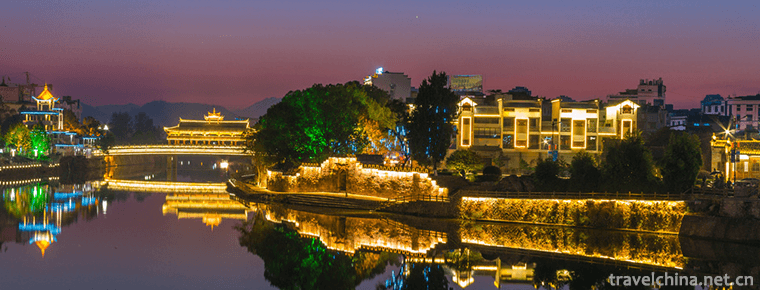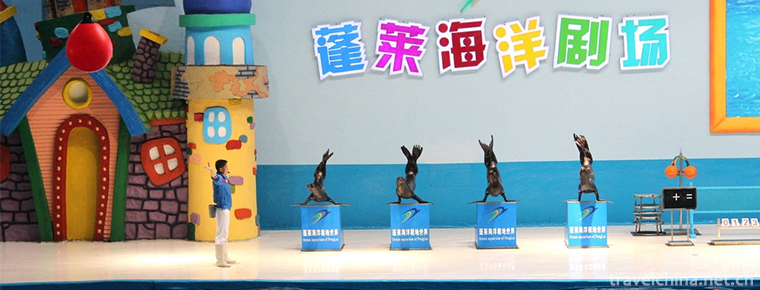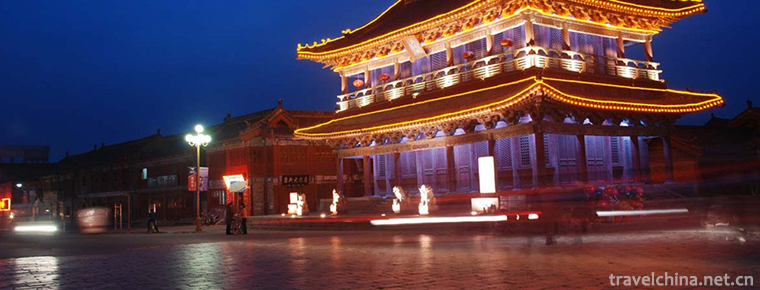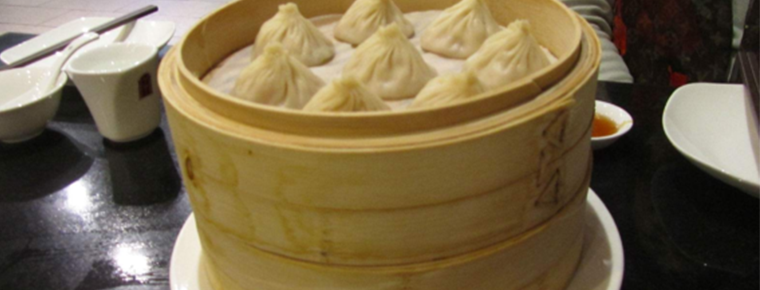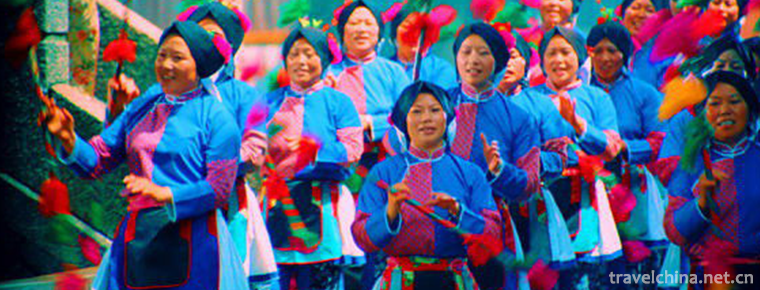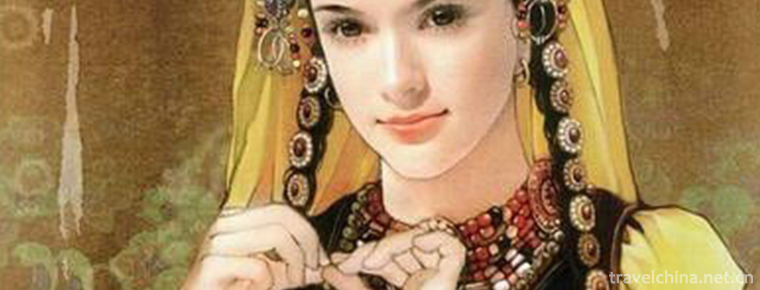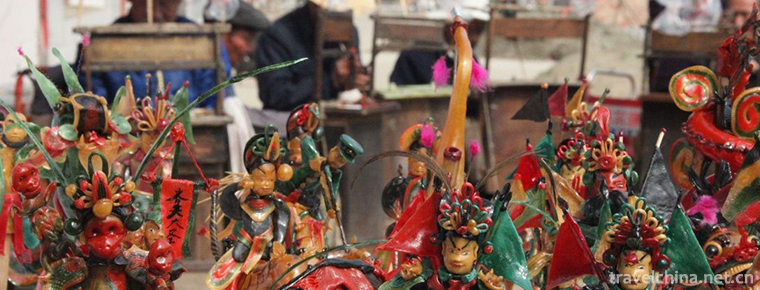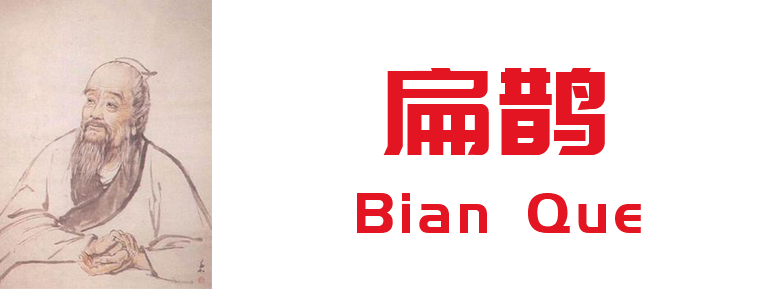Tsing Tan Temple
Tsing Tan Temple
Qingdan Temple is located 3.5 kilometers west of Fucheng, Zaozhuang City, in the narrow valley of Chu and Han Mountains. It was built in the Tang Dynasty. It is a large Buddhist temple in southern Shandong Province. It is a scenic spot in the eco-cultural tourist area of Guanshipomegranate Garden in Zaozhuang City.
Qingdan Temple is the main scenic spot in Guanshi Pomegranate Garden Eco-cultural Tourist Area. It is the national AAAA-level scenic spot, the first batch of national agricultural tourism demonstration sites, provincial scenic spots, key cultural relics protection units in Shandong Province, service famous brands in Shandong Province, service standardization demonstration sites in Shandong Province, and the most popular self-driving scenic spots in Shandong Province.
Construction History
From Tang Dynasty to Song and Yuan Dynasty, the incense of temples became more and more prosperous, and there were many temples in the valley, so there was a saying that monk houses were like nests. By the Ming and Qing Dynasties, this place was a place for literati and poets to visit. At the end of the Qing Dynasty and the beginning of the Republic of China, the temple was destroyed by fire and arms. The present Qingtan Temple was rebuilt in 1985.
Qingdan Temple is famous for its wide distribution of sandalwood trees and the astonishing number of ancient sandalwood trees. It was originally named Yunfeng Temple. It is located in the Qingdang Canyon composed of Chu and Han Mountains. Because the canyon is full of sandalwood trees, it was renamed Qingdan Temple. At the entrance of Qingdan Temple archway, four golden characters of "Qingdan autumn color" were written on the black plaque, and the pillars said, "When you see the green hills, you can hear the temple incense bells." Mr. Xu Shuxin, a famous poet, wrote a sentence in Youqing Sandalwood Temple: It's cold in spring on the Grenade Mountains, and the language of Guyou people is incomplete. Blue sandalwood has little nectar, but Xuanbutterfly is in a single shape. Mr. Min Yinnan, a famous painter and calligrapher, inscribed the Ginkgo Tree of Qingdang Temple: Ginkgo biloba in the temple, which was passed down to Xiao Tiaozhi. Shy at first, but foolish today. Is it unjust to be a lover forever? Whether the world can compare or not is always a touching poem.
According to the volume of "Yaxian Zhi Shanchuan", Qinghongshan, also known as Yunfeng Mountain, is located seven miles west of the city. Confronted with the Han King Mountain, it is high and steep. Qingdan Temple is under Beiyan, one of the Eight Sights of Yiyi,'Qingdan autumn color'. On sandalwood, the branches are twisted like dragons and centuries old. Behind the temple is the Jinjie Tower, where Yuewumu was stationed for generations.
Location Scope
Qingdan Temple is located in the narrow valley of Mount Chu and Han, 3.5 kilometers west of Fucheng. The longitude and latitude are 34 degrees north, 46'13.27 east, 117 degrees 33'53.80.
Special snacks
Fucheng pomegranate is characterized by its thin skin, bright and lustrous color, crystal and full grains. In 1986, it came to Beijing to participate in the National Forest Products Exhibition and was praised as "Qilu Yiju". There are more than 20 varieties, of which "three white ice sugar seeds" have snow-like flowers, jade-like skin, ice-like seeds and sweet ice sugar, the most famous; "Big green skin" is the main cultivar, with a single fruit weight of 350-800 grams, up to 1580 grams, and its petals overlap, up to 50 petals, green leaves, red flowers like fire, very ornamental value. Yicheng "ten thousand mu pomegranate garden" is a major local tourist attraction.
Festival activities
Two days before the Qingming Festival holiday (April 4 and 5 each year) is the traditional Spring Temple Fair of Qingtan Temple in Yicheng District, Zaozhuang City, Shandong Province. This is an ancient temple fair which has a history of more than 400 years since the Qing Dynasty. Qingtan Temple Fair is centered around Qingtan Temple, including the valley area with a length of 5 kilometers before and after the temple and a width of 500 meters. It is the most famous temple fair in southern Shandong Province and has an impact on famous temple fairs in four provinces such as Jiangsu, Shandong, Henan and Anhui. On this day, more than 200,000 citizens and visitors will go to the Qingtan Temple scenic spot to "catch up with the temple fair", and as one of the main reception sites of the temple fair, Qingtan Temple receives more than 100,000 visitors in two days.
Autumn Temple Fair: for the nineteenth of September of the lunar calendar every year, after the busy farming season.
Ticket price: 10 yuan per person.
Characteristics of scenic spots
Introduction
Qingdan Temple is a large Buddhist temple in southern Shandong. The scenic spots include: Qingdang Autumn Archway, Qingdang Lake, Shuixie, Shade Avenue, Zaozhuang Image Tree (Zaozhuang persimmon), International Friendship Calligraphy Stele Gallery, Liufang Hall, Millennium Ancient Sandalwood, Jiaolongtengkong Tree, Shanmen, Peacock Kaiping Tree, Sheli Tower, Tianwang Hall, Couple Ginkgo Tree, Min Yinnan's Poetry Stele, Daxiong Palace and Paidian, Changting, Qinghongshu dense forest area, Butterfly Valley, other scenic spots such as Dongtianqiao, Chu, Hanwangshan and Chu, Hanwangting, Deep Mountain Ancient Buddha, Tea (Zen) Society, Yuefei Yangye Tower, Pharmacist Pagoda, etc.
Constitute.
There are scenery in Qingdan Temple all year round: spring, summer, autumn and winter. The scenery is different in different seasons. Every year, visitors from South China and Haibei will come here to enjoy the festival of pomegranate flower in May and the festival of pomegranate picking in September. They will experience the happiness of health preservation and leisure. It is an ideal place for tourism and leisure vacation.
Architectural features
Blue sandalwood autumn scenery
The "autumn color" portal of Qingtan Temple is an archaic building with three doors, four columns and two vertical eaves and bucket arches, and a mixture of wood structure and reinforced concrete structure. Above the door, a black marble inlaid plaque with the four words "autumn color of green sandalwood" is written by Liu Yifu, Vice Governor of Zhejiang Province.
Menfang is a narrow valley about 1.5 kilometers long, covered with Green Sandalwood trees. There are 36 trees over a thousand years old and countless trees over a hundred years old. At the end of the narrow valley is the Qingdao Temple.
The three words "Qingdan Temple" on the mountainous plaque of Qingdan Temple are written by Shu Tong, a calligrapher. The monastery covers an area of 1050 square meters and a building area of 330 square meters. The main building is the five halls of Daxiong, with eaves and arches, in which Buddha III is worshipped. There are three rooms in the West and a pavilion in the east. There is a ginkgo tree in the front yard of the palace. It is over a thousand years old and has strong leaves up to now. Mr. Min Yinnan's "Ginkgo Tree inscribed on the Qingdang Temple" is located under the tree. In front of the temple there is "Runtangtang Well". During the drought years, the water flows continuously. During the rainy season, the water will gush out from the wellhead like a fountain, which is very shocking. On the Dongshan cliff beside the pavilion, the inscription of Wenfeng Shanren on the cliff stone inscription "Forget to Return" means that tourists who come here are so beautiful that they forget to go home.
Yue Fei Yangye Building
The stone wall behind the hall is also inscribed with the words "Return to My River and Mountain". There is Yuefei Yangyelou. It is said that Yuefei, the national anti-gold hero of the Song Dynasty, suffered from eye diseases due to accumulated internal and external troubles. At that time, the abbot of the temple, Huicong, washed Yuefei's eyes with the tender leaves of the Qingdan Temple every day. Because the leaves of the almond tree had the effect of clearing fire and brightening eyes, Yuefei's eyes were soon after. He was able to recover and return to the battlefield to kill the enemy. In the Song Dynasty, a stone building was built to commemorate the building, but it was destroyed during the "Cultural Revolution". The government rebuilt the building in 1985. The building area is 112 square meters. It retains the thin gold body "Jinjie" stone tablet on the plaque of the original building. There are statues of Yue Fei sitting in the building. In 2012, Yue Fei's descendants launched a large-scale ancestor memorial activities at home and abroad.
Tibetan Palace
Tibetan Palace: Located behind Yuefei Yangye Tower, one day there was a natural crack in the cave, 97 meters long, and there were skylights everywhere. There are seven branch caves with stalactites all over the cave. According to the folk legend "Ten-storey" design and design, it is composed of four parts: the Tibetan Bodhisattva Hall and Cangsang Zhengdao. There are 25 groups of statues with more than 150 shapes. The scenes are decorated with more than 200 colorful lights, using modern methods of sound, light and television. The combination of movement and quiet is a view of the Qingtan Temple. It has been opened and closed in recent years.
Main attractions
Wenfeng Mountain, the first peak in the border between Sulu and Shandong, has the characteristics of being strong, dangerous, strange and beautiful. One of the eight scenic spots in Zaozhuang is Wenfeng Guanhu Lake.
Hongtubu Site is a representative and important ancient site in the late primitive society. It was listed as a key cultural relic protection unit at the provincial level in 1992.
Nuwa grave site, the legendary Nuwa patching heaven, grave remains;
Yinping 10,000 Mu jujube garden is the largest jujube fruit base in southern Shandong Province. It has high ornamental value and can carry out picking and eco-tourism activities.
Pomegranate bonsai garden shows visitors the art of pomegranate bonsai, which embodies the essence of pomegranate culture. It has a unique professional economic model of pomegranate bonsai courtyard.
The main content of Qingdan Temple is to admire the thousand-year-old sandalwood and Chao Buddha.
Honors
Scenic Area Title: Top Ten Innovative Brands of Tourism Products, Self-driving Camps and Popular Science Education Base in Zaozhuang City.
Protection of cultural relics
Qingdan Temple was published as the third batch of provincial cultural relics protection list in Shandong Province in 2012, and cultural relics protection units above the municipal level in Zaozhuang City .
Tourist guide
Reservation notes
1. Ticket price 60 yuan
2. Opening hours 8:00 a.m. - 18:00 p.m.
3. Ticket-free crowd: children less than 1.2 meters ticket-free ; elderly people over 65 years old with old age certificate or identity card ticket-free; holders of their military disability certificate can enjoy the eligibility for ticket-free.
4.1.2 m-1.4 half votes; student vouchers half votes; 60-65 year-olds half votes.
bus line
1. Zaozhuang Bus Terminal will arrive at the terminal of No. 1 bus.
2. Zaozhuang (High-speed Railway) Station: Take T1/T10 to Unicom Transfer Center and transfer to B4 Express Bus and get off at the terminal.
3. Zaozhuang West Railway Station: Take B1 to Unicom Transfer Center and transfer B4 to the terminal.
4. Self-driving: S38 Expressway under the exit of Fucheng, 3 km north along National Highway 206 from Guanshi Pomegranate Garden East Gate into the archway 1.5 km to the scenic parking lot.









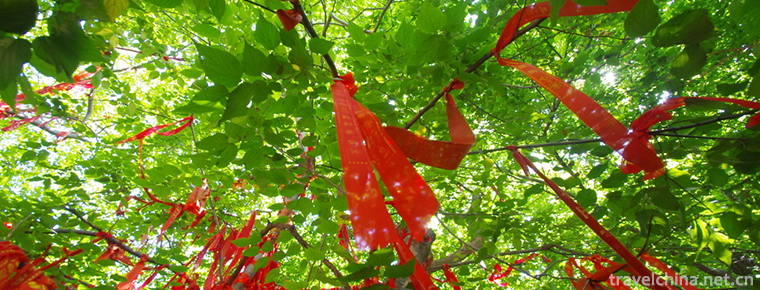
-
Houttuynia cordata Thunbherba houttuyniae
Houttuynia cordata Thunb. is a kind of herbal medicine collected in the Chinese Pharmacopoeia.
Views: 239 Time 2018-10-12 -
Taining Scenic Tourist Area
Taining Scenic Spot: World Geopark, National AAAAA Class Tourist Spot, National Key Scenic Spot, National Forest Park, National Geopark, National Key Cultural Relics Protection Unit.
Views: 182 Time 2018-12-08 -
Zengjiashan Scenic Area
Zengjiashan Scenic Spot is located in Chaotian District of Guangyuan City, south foot of Qinba and the combination of Sichuan and Shaanxi. It covers 6 townships and townships with 70,000 people.
Views: 132 Time 2019-01-04 -
Penglai Ocean Polar World
Penglai Ocean Polar World is located at the foot of Penglai Danya Mountain. It is adjacent to the famous Penglai Pavilion. It is invested by Penglai Haifeng Industrial Co., Ltd. for 460 million yuan.
Views: 229 Time 2019-02-07 -
Lion Tower Tourist Area
Lion Tower Tourist City is located at the head of the cross street of Yanggu County Town. It was built in Jingyou of the Northern Song Dynasty for three years..
Views: 100 Time 2019-02-08 -
Traditional pasta making techniques
Traditional pasta making technology was listed in the second batch of national intangible cultural heritage list in 2008..
Views: 88 Time 2019-04-20 -
Womens clothing in Yongzhishui Townshi Suzhou
The women's clothing in Yongzhishui Township, Suzhou, is an outstanding representative of the Han nationality's clothing. It is a typical and representative clothing of the working people in Wu area. .
Views: 272 Time 2019-06-17 -
Tajik costumes
Tajik costume refers to the costume with distinct ethnic characteristics of Tajik. Tajik people mainly live in the Pamir Plateau with cold climate. Their economic life is mainly animal husbandry and a.
Views: 313 Time 2019-06-17 -
Sugar plastic
Sugar sculpture, one of the traditional folk handicraft products, commonly known as sugar blowing, sugar manikin, engaged in this trade called sugar blowing people, throughout the country, especially .
Views: 360 Time 2019-06-18 -
Bian Que
Bian Que (407 BC - 310 years ago) Ji surname, Qin Shi, name slowly, the word Yue people, also number Lu medicine, the spring and Autumn period and the Warring States period famous doctor. The spring a.
Views: 131 Time 2019-09-06 -
Suining secondary industry
In 2019, the city's industrial added value will reach 49.158 billion yuan, an increase of 8.7%, contributing 50.7% to economic growth, and boosting economic growth by 4.1 percentage points. The number of Industrial Enterprises above Designated Size reached 573.
Views: 351 Time 2020-12-16
